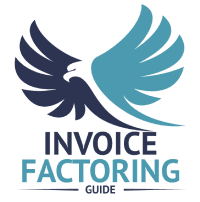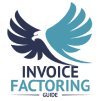Instant Invoice Factoring Calculator
Are you navigating the complexities of cash flow management? Invoice Factoring Guide’s Instant Invoice Factoring Calculator is your first step toward understanding the potential costs of invoice factoring. This user-friendly calculator offers an immediate estimate of your factoring fees by simply inputting your invoice’s value and its expected payment date.
When Will I Receive My Advance?
If you’re exploring invoice financing for the first time, you’ll be pleased to know that the process can move quickly. Many businesses receive access to immediate working capital within just a few days. Here’s a breakdown of how the typical factoring process works and when you can expect funds in your account.
1. Request a Quote (1–2 Business Days)
Start by using our invoice factoring calculator to estimate your advance and factoring fees. Once you’re ready, request a quote, and we’ll match you with a lender aligned to your goals. Most providers respond within one business day.
2. Get Approved (1–5 Business Days)
Once you’ve reviewed your quote, complete a short application. Approval times vary depending on your industry, invoice size, and accounts receivable history. Most businesses are approved within 1–5 days, especially when documentation is complete.
Need help preparing? Review our invoice factoring preparation guide for a smooth application process.
3. Receive Your Advance (0–2 Business Days)
After approval, you can start factoring your invoices immediately. Funds are typically transferred to your bank account via ACH within two business days. Some factoring companies offer same-day funding for urgent needs. You’ll receive a percentage of the invoice upfront—often 80–90%—with the reserve amount released once your client pays.
Curious how that works? Learn more about how factoring companies handle unpaid invoices and the final payout structure.
Tip for First-Time Users
If you’re ready to start factoring, you may receive your first advance amount in less than a week. While our calculator provides a strong estimate, each financing solution is unique. Be sure to clarify any rates and fees your provider may charge, especially for setup, wire transfers, or monthly minimums. For a deeper look into pricing variables, visit our invoice factoring fee guide.
How the Instant Invoice Factoring Calculator Works
Our invoice factoring calculator helps you estimate fees and advance amounts based on your invoice value and payment timeline. It’s a simple way to calculate the cost of invoice factoring and understand how it could boost your working capital.
Follow the quick steps below to get started:
Step 1: Enter Your Total Invoice Amount
Input the total invoice value (e.g., $10,000) for the receivables you want to factor. You can calculate a single invoice or the combined value of multiple outstanding invoices.
Tip: Try different amounts to compare how factoring affects your cash flow across scenarios.
Step 2: Set the Expected Payment Terms
In the “Average Payment Term” field, enter the number of days your customer typically takes to pay (e.g., 30 for Net 30 terms).
If your payment timelines vary, average them out for a quick estimate, or calculate one invoice at a time for more precision. The invoice term directly affects the factoring fee, since longer timelines typically increase costs.
Step 3: Review Your Estimated Advance and Fees
Once your inputs are added, the calculator will instantly display:
- Factoring Rate (%): The percentage fee charged by the factoring provider
- Total Cost of Factoring: What the service may cost based on your input
- Advance Amount: Your upfront payment, calculated as a percentage of the total invoice
These dynamic results update in real-time and help you estimate your factoring costs before committing to a provider.
By following these steps, you’ll gain a preliminary understanding of the factoring fees you might expect, helping you make informed decisions about leveraging invoice factoring for your business’s cash flow needs.
Understanding Factoring Costs
The cost of using invoice factoring depends on several factors that influence the rates and terms offered by factoring companies. Understanding what goes into your fee structure helps you better estimate the cost, plan ahead, and choose the right funding solution.
Here’s a breakdown of the key components that determine your total cost:
See “How Much Does Factoring Cost: An Invoice Factoring Fee Guide” for more detailed information on factoring fees and costs.
Calculator Limitations
While the Instant Invoice Factoring Calculator is valuable for preliminary assessment, it doesn’t consider all potential costs due to the differences between factoring companies, businesses, and factoring agreements. A few additional areas to consider are detailed below.
Beyond the Estimator: Request a Detailed Quote
For an accurate assessment tailored to your business’s unique needs, including industry specifics and comprehensive risk evaluations, request a detailed quote. This step ensures you receive a customized factoring solution that optimally supports your business’s financial strategy. Request your detailed quote now.
PREFER TO TALK? Call us at 1-844-887-0300


